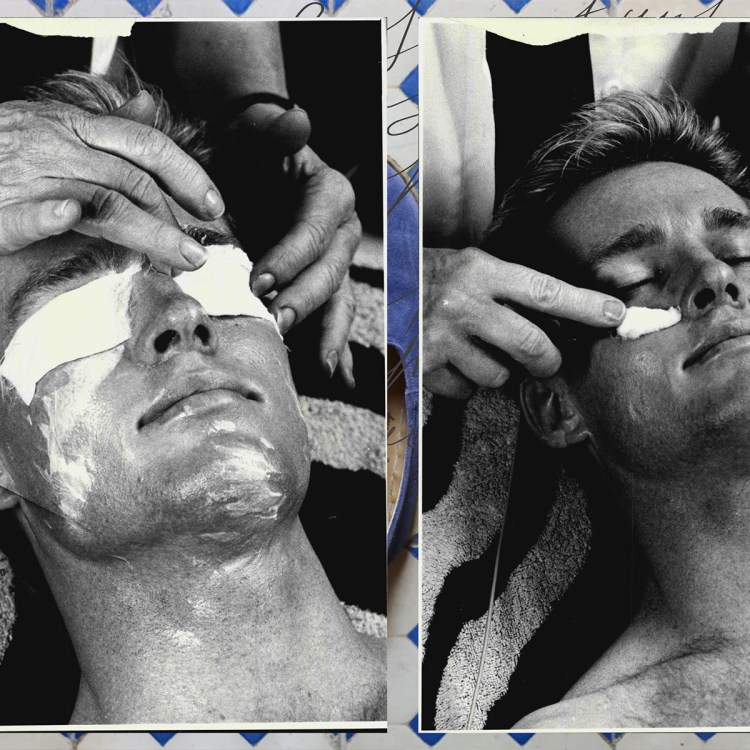James Nestor got some amused responses when he first proposed his book idea to publishers.
“They said, ‘What?! Three hundred pages on breathing?!,’” he recalls, as if the activity were so basic, commonplace and innate that there was nothing new to say about it. “They said [any interest in breathing] was some New Age pursuit,” Nestor adds. His book Breath: The New Science of a Lost Art went on to become a best-seller.
“In part they were right. Breathing has been co-opted under that ‘spiritual’ or ‘yogic’ umbrella, and ideas about breathing have been manipulated such that some claims made are outrageous — the idea that you can breath away cancer, and nonsense like that,” says Nestor. “But there’s irrefutable scientific evidence that this physiological, biological act we do 20,000 times a day…has a huge impact on how we feel, physically and mentally.”
This is something that some Hindu and Buddhist traditions have known for centuries, even thousands of years. Seven books of the Chinese Tao, dating to 400 B.C., focus entirely on breathing. The words “spirit” and “respiration” are both derivatives of the Latin spiritus. Professional sportspeople learn to control their breathing before and during play. It’s essentially everyone’s experience that deep, controlled breathing helps us feel calm when agitated.
The 10 Best Breathing Exercises for Sleep, Fitness and Calm
There are a lot of tricks out there. Keep these in your toolkit.You Have the Power
How does it work? The brain processes oscillations related to (among many others) the autonomic system: that’s the system that controls all the passive operations your body performs without thinking, breathing among them. But your breathing happens to be the only one of these operations you have any control over. Steady breathing synchronizes those oscillations in several regions of the brain.
In other words: “You can change the brain’s processing of signals and so drive permanent change along with it,” says Jack Feldman, professor of neurobiology at the University of California, L.A. Through breath you can actively influence certain functions of the immune and nervous systems.
“It turns out that our brain’s relationship to breathing is extraordinarily complex,” Feldman enthuses. “It’s the difference between looking at a mechanical watch and assuming you just need a tightened spring to drive the hands round, then opening the watch and seeing the complexity required for that persistence of power and precision. Likewise, breathing looks simple but has to be extremely reliable, from before you’re born and for around 600 million cycles. It has to change very quickly — by a factor of three just moving from sitting to standing, or you pass out. It has to control your speech. And so on.”
The Benefits of Breathing
Breathing techniques have been shown to lower blood pressure and heart rate, among other benefits of feeling calmer. Some skeptics have suggested it’s all placebo, but later this year, Feldman plans to publish results that he hopes will turn them into believers. He co-developed a model that slows the breath rate of mice by a factor of 10, daily for four weeks, which evidently made them much less fearful (relative to other mice).
“So we’re convinced that this is a real effect and not just a human behavior,” says Feldman. “We hope this insight might encourage skeptics who could benefit from breathwork [the fancier term the practices have been given] to give it a try. Who knows why 2,000 years of breathing techniques came to be neglected? But we see a trajectory for breathwork that puts it under the same umbrella of things we understand as having a positive effect on our health, the likes of exercise and nutrition. I was a skeptic and now I’m convinced it’s had a positive effect on my mental state.”
Breathwork sounds, well, like work. But according to Nestor, what matters most about breathwork is not just that it’s productive — he says the effect for him was “instantaneous” and profound, solving a lifetime of one and off respiratory illnesses — but that it’s free (“usually practices like this involve someone skimming off cash,” he notes), easy to start and, in time, becomes second nature.
In Through the Nose
“There are all kinds of kind things you can do with breath,” he laughs, citing various breath holds, systems and approaches, all with subtly different effects. “But for many the hardest thing is just to breath normally. If you can do that you’re 80% of the way there.”
Most people will assume that they already breathe normally — after all, it’s an automatic process, to which we give little thought, that always seems to work. But what Nestor and others stress is the need to breath in and out through the nose. No, the nose isn’t just an alternative way of breathing, as opposed to breathing in through the mouth. The nose is expressly designed to maximize your breath in so many ways, from warming and filtering the air, to releasing specific hormones.
Andrea Piarulli, adjunct professor of psychophysiology of mental activities at the University of Pisa, points out that until relatively recently, our olfactory system was thought to respond only to chemical changes, not mechanical ones. In fact, the tissue in the nose has erectile qualities. It can periodically alternate its “dominant” nostril in order to induce different effects on the brain cortex: one nostril speeding up circulation and increasing cortisol levels, the other nostril doing the opposite.
Other Strategies That Work
If you can make nose breathing your new normal — ideally even while sleeping — you might then look to your gut. We’ve been somewhat conditioned by the narcissism of modern fitness culture to pull our stomachs in all the time, but “belly breathing” (think of it as a balloon inflating and deflating) makes for far more effective respiration than chest breathing.
Next might be moving toward taking slower, more regular breaths, more in line with our metabolic needs — an idea first explored by modern science in the 1920s and now set to be given scientific underpinning by Feldman’s research. Many of us tend to over-breathe (much as we’ve come to over-eat, Nestor suggests), at between 12 and 20 breaths per minute, a rate that actually exacerbates stress responses: the sympathetic nervous system kicks in with its readiness to fight or flight, increasing blood pressure and overworking the heart.
Instead, just five or six good deep breaths per minute, slowly in and slowly out to the rough count of five seconds, what’s sometimes called “coherent” breathing, increases activity of the vagus nerve, the part of the parasympathetic nervous system that’s in charge when you feel safe and relaxed. Slower breathing also allows the diaphragm to drop lower, allowing more air to enter the lungs and pushing more blood around the body. Twenty minutes of this before bed significantly improves sleep quality.
Is a Cold Shower Ever as Effective as a Cold Plunge?
A breakdown of cold therapy, from the bathroom to the beachWe’re Still Learning
Another kind of practice, known as “box” or “square” breathing, involves spending a few minutes on and off throughout your day breathing in through the nose to the count of five and holding for the same (contrary to most people’s belief that breathing is all about getting in oxygen, CO2 is crucial to you, too). Then you breath out slowly for five (breathing out actually decreases heart rate), holding for the same and repeating that cycle. Another strategy: “triangle” breathing on a 4:4:4 ratio of inhale, hold and exhale.
Piarulli, who has used 15 minutes of slow breathing a day to help with his own anxiety, points out that there are so many different breathing techniques out there — some that have been subject to clinical studies, other none at all — that he is pushing for a more objective understanding of which accomplish what.
“That’s important because it would be good to move towards more standardization of this breathing practice,” he says. “In the future we may be able to use different breathing techniques — in terms of pace, length and respiratory phase — with knowledge of each method’s particular effect on the brain, relative to specific illnesses.”
Results Will Come
For some, the effects can already go much deeper — at least anecdotally — than dialing back nervous energy.
Richard Brown, the associate professor of clinical psychiatry at Columbia University College of Physicians and Surgeons, and co-founder of the non-profit Breath-Body-Mind Foundation, first came to explore breathing techniques through martial arts 20 years ago. He’s since taken his breathwork teaching to schools, the military and, perhaps most importantly, to survivors of abuse, genocide and war in Ukraine. He says he regularly sees “dramatic improvement” in his trainees.
“We need to be able to do this breathwork everywhere, whenever we need. Even in the middle of some stupid meeting, for example,” he says. “We clearly need extra help to remove stress from our lives, and that was before Covid. Now you see people acting in really weird ways because they’re hyper-stressed. Of course, most people don’t want some new religion but they do want to be happier and healthier. And breathwork is one way to that. We all need it.”
The Charge will help you move better, think clearer and stay in the game longer. Subscribe to our wellness newsletter today.


























